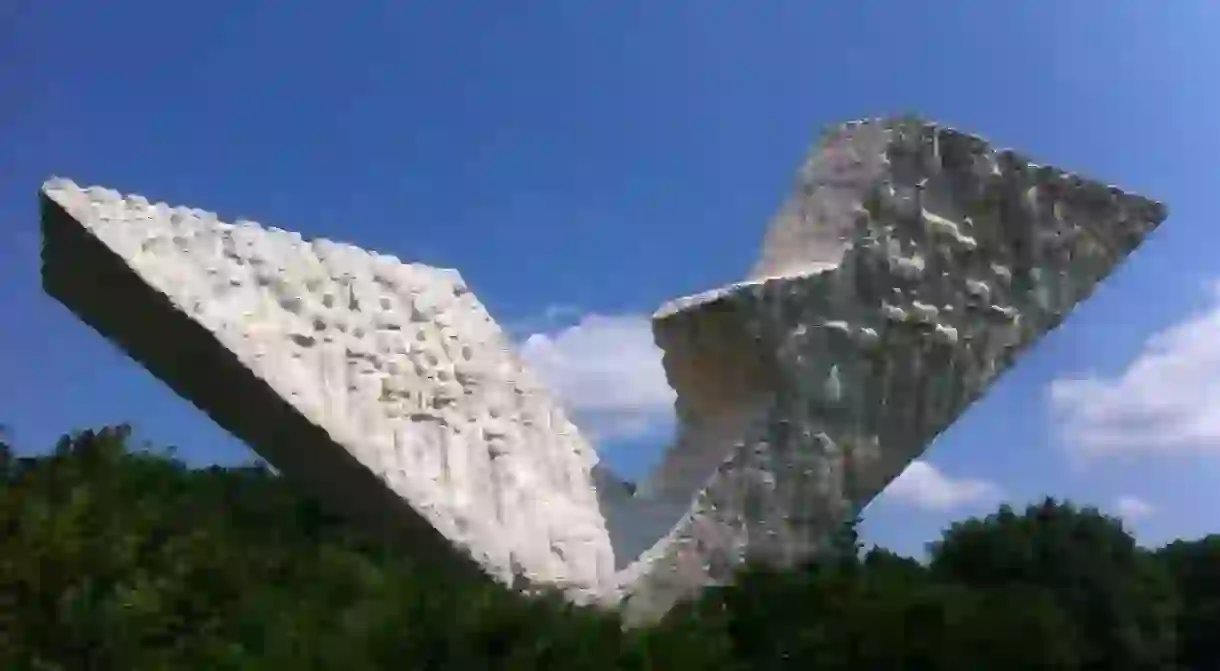Top 10 Things To See and Do in Kragujevac, Serbia

Serbia’s fourth largest city, Kragujevac, is often overlooked in favour of the bigger and more alluring spots to the north. The country’s industrial capital has plenty to offer to any visitor however, whether with its fascinating and difficult history or its dedication to culture in difficult times.
21 October Memorial Park
The 20th century was a difficult one (to say the least) for Serbia, and Kragujevac’s position in the heart of the nation meant it was going to be impossible for it to avoid the carnage. The Nazis were particularly active in these parts, and thousands of the town’s citizens were executed here in 1941. A huge memorial park dedicated to those lives lost has sprung up, a massive expanse of greenery that is dotted with monuments big and small.
The ‘Interrupted Flight’ monument gets the most press, and for good reason. The white stone statue depicts a broken wing, nodding its ideological head to the potentials of those men, women and children that were never realised. There are 10 monuments in total in the park, along with a graveyard and a small chapel that exudes class and respect.

21 October Museum
A museum dedicated to the atrocities stands at the entrance of the park, and is an intense experience from the start. The very architecture of the site is intended to reflect the hopelessness experienced by those innocent civilians, red bricks for red blood and 33 towers for the same number of mass graves found in the area.
The museum is difficult but important. It includes notes written by the executed in their final moments, along with other personal possessions found on the murdered.

Milošev Venac
Moving away from the misery of World War II, Kragujevac holds an important place in the heart and soul of the resurrected Serbian state. Miloš Obrenović declared it the capital of the modern Serbian state in 1818, and the iconic Prince established a circle of stunning buildings to enhance its standing. The town grew around this circle, and many of the buildings managed to survive the violence of the 20th century unscathed.

Prince’s Arsenal
A huge industrial military complex in the heart of the city, there is nothing like this in all of Europe. Its glory days are long gone of course, but the immensity of Serbian industry over the years is best seen here. It has become a popular setting for movies in recent times, and it isn’t hard to see why. A museum on the site showcases the evolution of Serbian weaponry over the years.

Botanical Garden
You know what you’re going to get with a Botanical Garden, and Kragujevac’s green centre is no different. Many different species of flora can be found here, including trees, plants and shrubs native to Europe, Asia and beyond. Educational information is at every corner, meaning you’ll never be out of the loop when it comes to the greenery in front of you.
Kragujevac Aquarium
The first of its type in the country, the aquarium in Kragujevac showcases a well-balanced mix of local and international water beasts. Located in the Faculty of Science and Mathematics, this is the place to go to gawp at fish, amphibians and any other animal you’d expect to find beneath the waves.
Old Church
The Old Church in Kragujevac was built in 1818, the same year in which Miloš Obrenović brought autonomy back to Serbia, and no expense was spared in its construction. The finest builders from the region were brought to construct something magnificent, and they buildt a monument to freedom that played host to all the important political decisions in those early years. Its importance has waned somewhat over the years, but the history here is palpable.
National Museum
The National Museum in Kragujevac spreads out over a number of locations, covering archeology, ethnography, arts and the history of Kragujevac and the wider Šumadija region. Amidža’s Quarters is probably the highlight, an excellent example of the architectural style that was prominent in Serbia at the time. Prince Mihailo’s Quarters are another fascinating insight into Serbia’s once optimistic past.
First Gymnasium
Obrenović’s decision to make Kragujevac his capital made it inevitable that many important buildings would spring up here, and a place to educate the newly freed children of Serbia was one of the first among them. Built in 1833, this majestic building was the first Serbian high school south of Belgrade, and it served as an important step on the road to educating the masses in the nation. It was the subject of a vicious arson attack earlier this year, but remains a vital attraction in the city.

Veliki Park
The intensity of the memorial park means that it isn’t ideal for a reflective stroll, and the city’s Veliki Park thus takes the role as the place to lazily trundle around in summer. The park was completely renovated just over a decade ago, making it the most popular spot in town to while away the afternoon.













